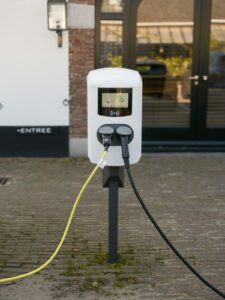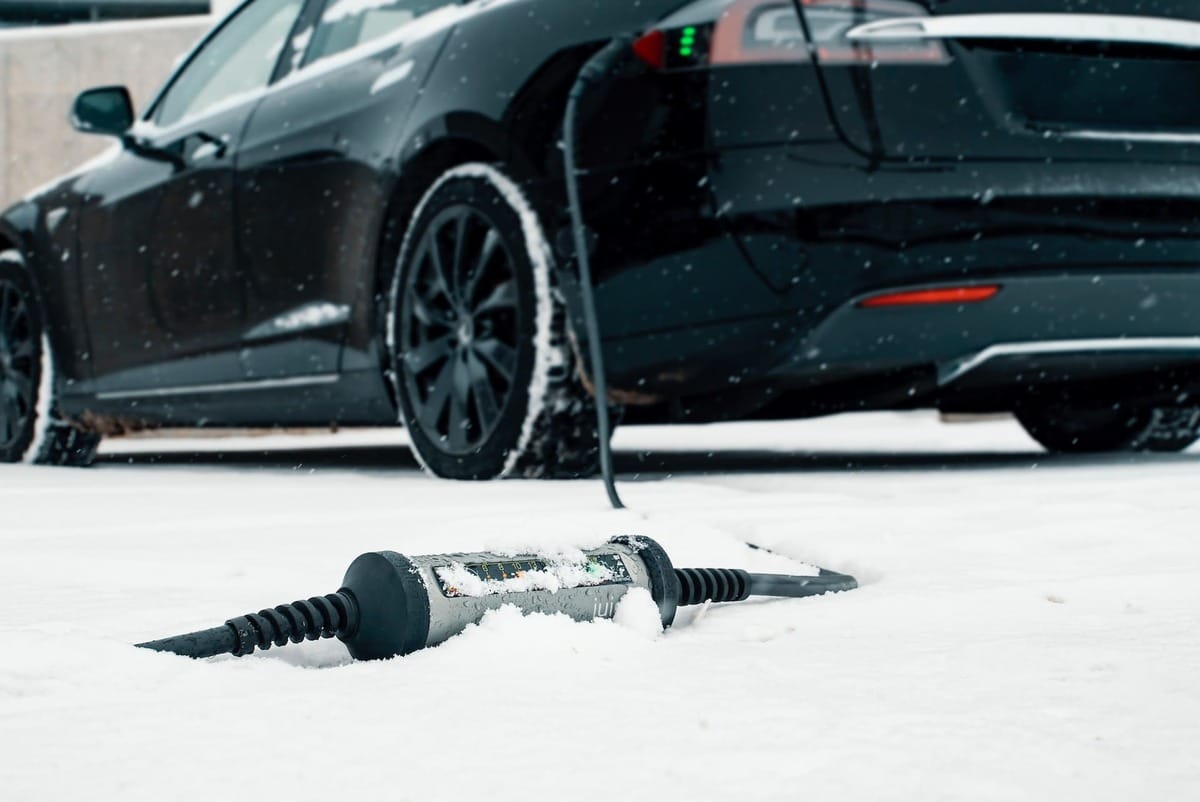
Home / EV Charging News / What Should I Know About Electric Car Charging Cables and Plugs?
As an Electric Vehicle (EV) owner, you should know what type of charging cable and plug to use in every situation. EV manufacturers have adapted charging accessories to different safety standards, regulations, and designs around the world, leading to the creation of numerous cables and plugs.
Whether you want to learn about EV charging in general or want to stay updated with the latest trends, this article is for you. Here we explain everything about the car charging cord, the basics of electric car charging plugs, different EV plugs available, and other interesting facts on the subject.
There are several types of chargers for electric cars. These are usually set into categories that overlap themselves, these are the following:
Slow/fast charging is the same as AC charging and it is also categorized as Level 1 and Level 2 EV charging. Rapid charging is the same as DC charging, being categorized as Level 3 EV charging. In this section we explain each of these electric vehicle charging types:

Figure 2: AC/DC EV charging
Slow charging or Level 1 EV charging is one of the main AC electric vehicle charger types, featuring a slow power rate of around 1 kW, which takes 40 to 50 hours to fully charge an EV battery. Fast charging or Level 2 EV charging is another of the AC electric car charging types, featuring a power rate of 7 kW up to 19 kW, taking only 4 to 10 hours to fully charge an EV battery.
During AC charging, the Chargerpoint or EV charger is powered with Alternating Current (AC). The power is converted from AC to DC directly at the on-board EV charger installed on the vehicle. This power is then delivered to the EV battery to recharge it.
AC chargers usually feature the Type 1 connector in America or the Type 2 connector in Europe, these are the most popular ones and are considered the standard in these two continents. There are other chargers used in China or for exclusive EVs like the Tesla ones around the world.
Rapid charging or DC charging is exclusively done over DC power, this charging type is also known as Level 3 EV charging or DC Fast Charging (DCFC). A rapid charger features a high power rate going from 50 kW up to 350 kW, easily charging the full battery of an electric vehicle in 20 minutes to 1 hour.
When an EV is being recharged over a rapid charger, the power is always converted from AC to DC externally. These electric car chargers types feature a high-capacity power transformer to convert and inject a high direct current (DC) directly to the EV battery. The maximum current is limited by the Battery Management System (BMS), a safety system placed in an EV to protect the Lithium-Ion battery.
DC chargers feature different electric car charger connector types. In Japan and for certain imported EVs, the standard is the CHAdeMO connector, but the Charging Combo System (CCS) is rapidly becoming the norm for DC charging. The CCS is a charging system that combines AC and DC connectors, featuring either a Type 1 (America) or a Type 2 (Europe) connector for AC with its respective DC pins.
EV charging cables are accessories used to recharge an electric car battery, used by connecting it directly to an electric outlet or an EV charging station. An EV charging cable length goes from 16 – 18 ft. for conventional options or up to 25 ft. in particular cases, they also feature different current capacities, different EV plugs, and are divided into the following categories:
Charging cables going from Mode 1 to 3 are used for AC charging, while a Mode 4 electric car cord is used for DC charging. In the next section, we will explain in detail these categories.

Figure 1: Mode 1 charging cable
The mode 1 charging cable is the most basic and simple option used to charge a vehicle. It is likely you already own one since most EV manufacturers issue one of these with the electric vehicle. These electric charging cables do not include communication or control protocols, they simply connect to the EV on one side and to the electrical outlet on the other, delivering up to 2.3 kW.

Figure 2: Mode 2 charging cable
Mode 2 charging cables are slightly more complex and advanced than Mode 1 charging cables. A Mode 2 electric car charging cord features electrical safety systems, a robust build, and can establish a control & communication protocol with the EV using an embedded electronic device.
Level 1 and Level 2 EV chargers can be designed as Mode 2 charging cables. This means that you might find Mode 2 charging cables featuring a very slow power rate of 2.3 kW designed for Level 1 EV charging, but also Mode 2 charging cables that go up to 9.6 kW for residential applications, like the Leaf charging cord issued with the Nissan EV.

Figure 3: Mode 3 charging cable
A Mode 3 EV charging cord is commonly used for Level 2 public EV charging stations. Some are tethered to the EVSE, while others require you to connect your Mode 3 charging cable. Mode 3 charging cables can withstand the 92 amps delivered by 22kW level 2 EV chargers, and protect against electroshocks.
The design of the Mode 3 charging cable allows for an EVSE to communicate and control the EV, delivering smart features. This EV cord is usually issued with residential EV charging stations, but it can also be bought separately. An untethered cable comes with an EV plug on both ends, while a tethered one like the Mustang Mach e charging cord issued with the Ford vehicle is tethered to the EVSE.

Figure 4: Mode 3 charging cable
The Mode 4 EV power cable is the most advanced type of cable, exclusively used for DC charging. These charging cables are designed to withstand 480V up to 1,000V that some DC Fast-Chargers can deliver and up to 400 amps. A few residential EV chargers are being designed for DC charging, also using these types of charging cables.
Properly storing your EV power cord is the best way to ensure none of the conductors inside the cable breaks, extending its lifespan. This is especially useful if you have a long EV charging cable.
If you always charge your EV in your garage, we recommend acquiring an EV charger holder in case your EV charging station does not already include one, to help you ensure the cable is out of the way and properly stored. In case you use your charging cable to charge in public stations, there are circular bags that can easily store the cable in the right position, without placing strains on the conductors.
An electric car charging plug connects the EV charging cable to the charging socket in your vehicle. An EV charging plug features different pins designed for communication and control protocols, and conductors used to deliver the current to the vehicle at a certain voltage. In the following section, we will explain the most popular type of EV charging plugs.

Figure 5: EV charging connector types

Figure 6: Type 1 – J1772 & CCS1 plugs
The J1772 and the Charging Combo System 1 (CCS1) EV charging plugs are known as Type 1 EV chargers. This is the standard in North America, Japan, and a few other countries. The J1772 EV plug is used to charge your vehicle with AC power and does not include DC conductors, while the CCS1 plug features the same communication protocols as the J1772, but delivers the current over the DC conductors.

Figure 7: Type 2 – Mennekes & CCS2 plugs
Similar to Type 1, the Mennekes & Charging Combo System 2 (CCS2) is known as the type 2 EV plug and it is mostly used in Europe and a few other countries. The Mennekes plug is used for AC charging, while the CCS2 plug is used for DC charging. Both plugs feature the same control and communication pins but include three-phase conductors for AC chargers and two DC conductors for DC charging.

Figure 8: CHAdeMO plug
The CHAdeMO plug is the most popular DC plug used in Japan. This is also the plug used for the Nissan Leaf DC charging cable and in a few other imported EVs. This is why you might find DC Fast Charging Stations featuring not only CCS1 plugs but also CHAdeMO plugs.

Figure 9: AC/DC GB/T plugs
The GB/T charging standard plug is the most popular used in China for AC and DC charging. Both the AC and the DC plugs feature the same name, but different pins and conductors to transfer the AC or DC power to the vehicle when charging.

Figure 10: Tesla EV plug
Tesla EVs used the Tesla proprietary plug for most countries around the world, mainly excluding Europe. This plug is used for AC and DC charging, using the same control and communication pins for both protocols. Since most EV charging stations feature Type 1 EV plugs in the USA, it is popular for Tesla EV owners to have a J1772-to-Tesla EV charging cable adapter to charge in Level 2 EV charging stations.
Most residential Level 1 and Level 2 EVSE use the J1772 EV plug, just like most garage Level 2 EV charging stations do. The most popular usages for the CCS1 and CHAdeMO plugs are seen in transit when EV drivers charge their vehicles in public DC Fast Charging stations. Tesla plugs are also quite popular in Tesla EV charging stations specially designed for Tesla owners. Type 2 plugs are rarely seen in America.
Level 1 EV chargers are usually portable. This means that the cable is embedded to the charging device while on the other side there is a typical 120V AC power outlet. 
Figure 11: Chargerpoint side EV connector in untethered EV charger
Level 2 and Level 3 EV chargers can feature tethered or untethered designs. Tethered EV chargers have the wire pre-installed and you only have access to the vehicle side connector, while untethered EV chargers have a charger side (female) and a vehicle side (male). Both sides of an EV wire feature a male and a female side of the Type 1, Type 2, CCS1, CCS2, GB/T, or Tesla car charging connector.
$2,890.00 Original price was: $2,890.00.$2,790.00Current price is: $2,790.00.
$3,950.00 Original price was: $3,950.00.$3,450.00Current price is: $3,450.00.
$1,650.00 Original price was: $1,650.00.$1,590.00Current price is: $1,590.00.
$2,290.00 Original price was: $2,290.00.$2,150.00Current price is: $2,150.00.
$1,290.00 Original price was: $1,290.00.$799.00Current price is: $799.00.

Your Power Management Partner for Over 25 Years Future Generations Depend on Our Decisions Today ™
2024 © All rights reserved by CyberSwitching